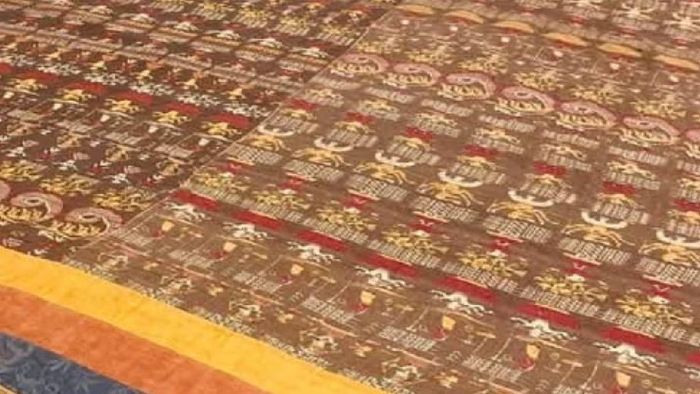Efforts on to bring the revered 16th century Vrindavani Vastra to Assam in 2027: Himanta Biswa Sarma
The revered 16th century Vrindavani Vastra, prepared under the guidance of the great saint Srimanta Sankardeva is presently housed in three museums across Europe, said Assam Chief Minister Himanta Biswa Sarma on August 30.

- Aug 30, 2025,
- Updated Aug 30, 2025, 11:28 AM IST
The revered 16th century Vrindavani Vastra, prepared under the guidance of the great saint Srimanta Sankardeva is presently housed in three museums across Europe, said Assam Chief Minister Himanta Biswa Sarma on August 30.
The Chief Minister highlighted that efforts are underway to make the Vrindavani cloth accessible for people in Assam. “There are certain challenges in bringing the cloth to Assam,” he said, noting that the British government has imposed some conditions on its transfer.
In the meantime, the artifact can be digitally viewed from Kalakshetra, providing an interim solution for enthusiasts and scholars. The Chief Minister announced that the Vrindavani cloth is scheduled to be sent to Assam for an 18-month period in 2027.
To showcase this invaluable heritage item, the Assam government is planning to construct a state-of-the-art museum. The museum will be built on land provided by the Silk Department and developed by the JSW Group, according to the Chief Minister.
The Vrindavani Vastra, a historically significant 16th-century silk textile from Assam created under the guidance of Srimanta Sankardeva, vividly depicts scenes from the life of Lord Krishna. Woven using the traditional lumpas technique, the cloth originally comprised 15 separate pieces that were later assembled into a single masterpiece, with the largest surviving example now preserved at the British Museum.
The textile, which incorporates diverse artistic influences, is celebrated as a testament to Assamese weaving traditions and cultural heritage, tracing a journey from Assam to Tibet before ultimately reaching London.